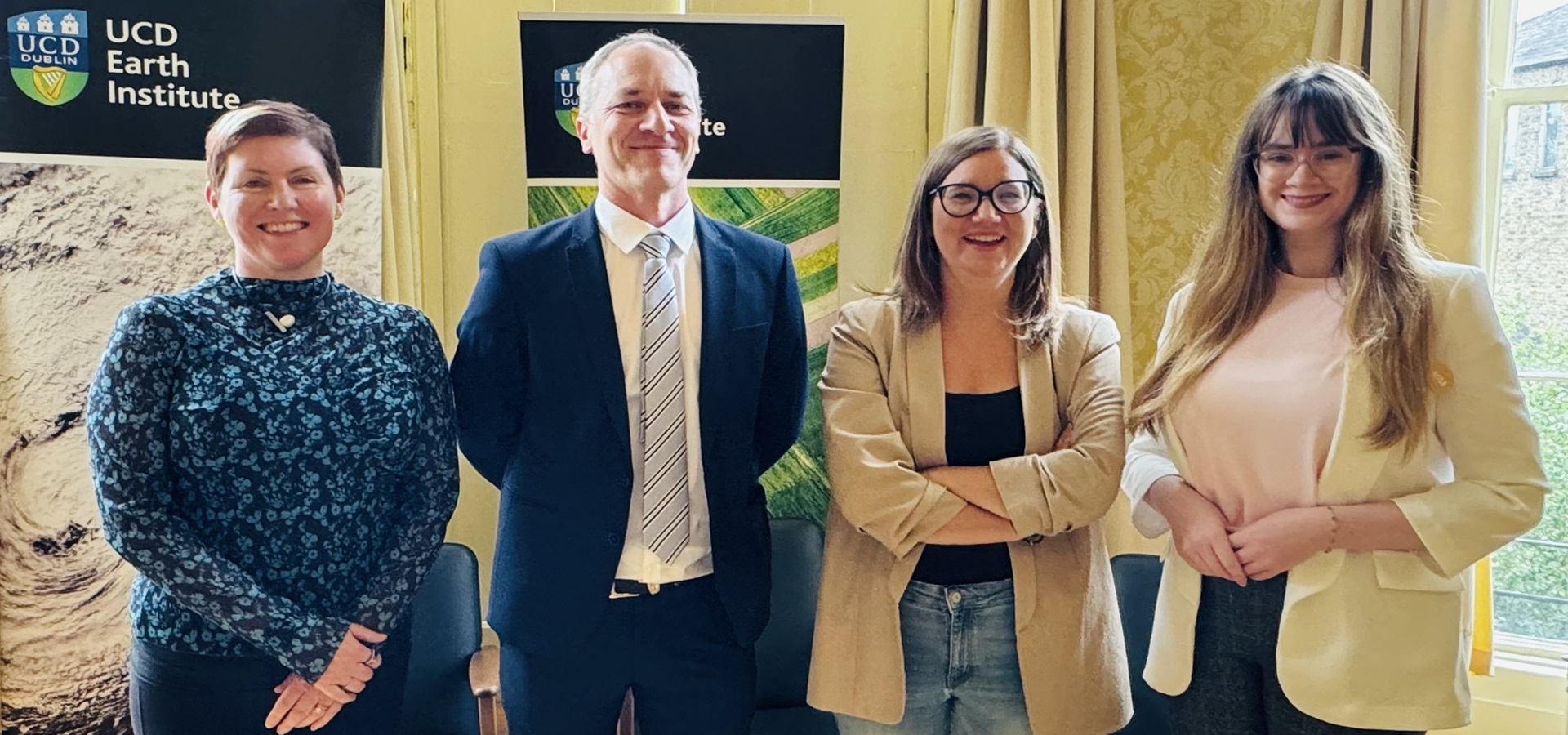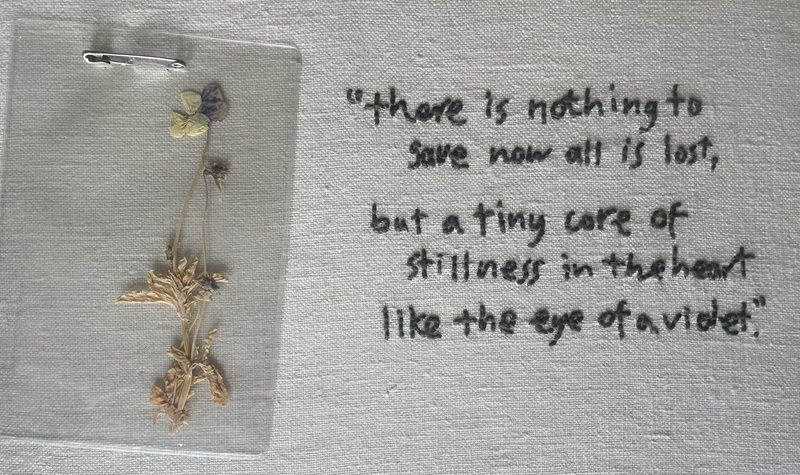Has the vast scale of human change to our planet instigated a new period of geological time, and if so, when did it start? Nick Scroxton from the UCD School of Earth Sciences explores the Anthropocene in the first in a new series of pieces developed and curated by the Earth Institute Associate Member Committee
Humans are changing our planet at a rate and scale rarely seen before in the Earth’s history. 70% of the Earth’s ice-free land surface has been modified by humans. Animal species are going extinct at a rate that rivals the great Mass Extinction events of Earth history. All the while, 13 trillion tons of carbon dioxide have been released into the atmosphere by the burning of fossil fuels. The extra carbon dioxide in the atmosphere has raised global temperatures by 1.1°C, causing extreme flooding, droughts, storms, and forest fires.
Human activity has overridden natural and geological processes on the Earth, leaving behind a mark on every system on the planet. For example, we move more sediment per year in boats and trucks for construction than all the world’s rivers put together. These changes could last for tens of thousands of years. So large are our impacts that scientists are debating whether we have created a new period of geological time. They are calling it the “Anthropocene”.
.jpg)
Dawn in the Anthropocene. Photo credit: crugerbrant
Earth Scientists have long divided up the 4.6-billion-year history of the Earth into different units. These units distinguish times with very different conditions and help build a picture of the processes and changes that have shaped our planet. Some of these units you might have heard of. For example, the Jurassic period (201-145 million years ago) is famous for its dinosaurs. Or the Pleistocene Epoch (2.58 million years ago to 11.7 thousand years ago), with ice ages, sabre-tooth tigers, and prehistoric humans. We currently live in the Holocene Epoch, which started 11,700 years ago at the end of the most recent ice age and has a warm, but not hot, stable climate.
These units of time are separated by markers known as golden spikes. They really exist as metal discs drilled into rock units around the world to denote the precise point in the rock record when one unit of time ended, and another began. The placement of these markers is subject to significant debate. If we are now in Anthropocene, then the big question is: when did it start?
To answer this question, we need to find out when did humans first leave an indelible mark on the planet? Some argue that the beginning of the Anthropocene is the same as the beginning of the Holocene. 11,700 years ago saw humans begin building temples and permanent homes, and domesticating crops and animals. Some scientists even believe we have been impacting global climate since then through the release of methane from rice farming.
Biologists might argue that the biggest change on our planet occurred at the beginning of the 15th century when the age of European exploration began. Crops, animals, and humans, previously restricted to small geographic areas, were now transported around the world. This would certainly be noticeable in the fossil record millions of years from now.
Perhaps the beginning of the Industrial Revolution is a good place to put the golden spike. The Industrial Revolution marks the rapid acceleration of human consumption via factories, rapid urbanisation and steam engines, all powered by coal and other fossil fuels.

Primate studying the Anthropocene. Photo credit: Kelvin, Tsz Hei Choi
Many want to mark the beginning of the Anthropocene much later. Nuclear weapons testing began in the 1945, leaving behind a global chemical signal. Or the development of plastics and other synthetic materials, now found in every ecosystem on Earth, which will leave behind a distinctive layer in the geological record.
Some say that even having an Anthropocene is an example of humans putting themselves at the centre of everything. A geological epoch lasts for thousands of years and is recognisable millions of years later. In ten million years’ time, will the scientists of the future look back at the present day and see the Anthropocene stretching out for thousands of years? Or will they see a temporary excursion in the geological and biological records, followed by a return to previous conditions? Is it not the Anthropocene, but rather the Anthropic Event?
One thing is for sure, the vast scale of human change to our planet rivals anything seen before in Earth history. And we’re the ones that must deal with consequences, right here and now, and for generations to come.
The Anthropocene is the thread that links together the UCD Earth Institute. We research both local and global environmental challenges faced by humans and the planet in the Anthropocene. Be it in climate, ecology, and agriculture, or in human systems and the built environment. As the world changes, can we change with it?
Essay first published 9 June 2021.
About the author
Nick Scroxton is a postdoctoral researcher in the School of Earth Sciences at University College Dublin and is currently a Marie-Skłodowska Curie/Irish Research Council Cofund CAROLINE Fellow. His primary research is on determining past rainfall variability in southern Africa. He combines satellite observations, climate model reanalysis, weather station observations and stalagmite geochemistry to determine how monsoon intensity varied in the past. Understanding how the rainfall system responded to past changes in the climate system will help predict future changes under modern climate change.
About the series
The A-Z of Environmental, Climate and Sustainability Research is a new series of short essays by UCD postdoctoral and postgraduate researchers, technical and research support staff, about their work. The series is developed and curated by the Earth Institute Associate Member Committee and Earth Institute staff. If you'd like to submit a piece for the series do get in touch!
Find out more about the Anthropocene with Nick Scroxton, Bees with Katherine Burns, Cannabis with Caroline Dowling, Degrowth with Ciarán O'Brien, Education with Georgina Fagan, Finance with Shane McGuinness, Gaia with Federico Cerrone, Hydrometry with Kate de Smeth, Innovation with Hannah Gould, Justice with Lauren Minion, Kelp with Priya Pollard, Landscape part 1 with Tomas Buitendijk, Landscape part 2 with Amy Strecker and Amanda Byer, Reusing microbial ‘bathwater’ for sustainable drug production with Laura Murphy, Mammals with Virginia Morera-Pujol, and Nitrogen with Ernest Osei-Asante in our latest essays.
Further reading
Dawn of the Anthropocene: five ways we know humans have triggered a new geological epoch
The Anthropocene is functionally and stratigraphically distinct from the Holocene, Science, 2016
Global human-made mass exceeds all living biomass, Nature, 2020

